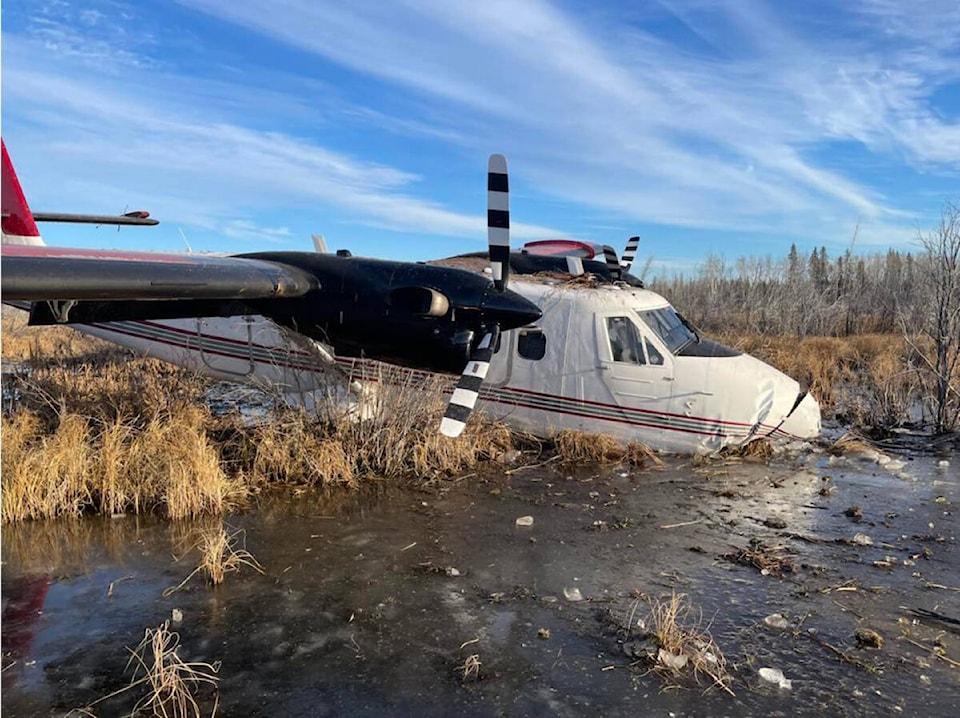Eight passengers and two crew members stranded roughly 300 kilometres northeast of Yellowknife are safe and should be back in Yellowknife Thursday afternoon, weather permitting.
That’s the latest from Air Tindi president Chris Reynolds, who spoke with NNSL Media Thursday morning.
“We received updates every two hours throughout the night from the search and rescue technicians on the condition of everybody and the weather,” he said. “At first light this morning, three helicopters were dispatched out of Yellowknife to land up at the base. They should be landing momentarily to bring everybody back to Yellowknife.”
A C130 Hercules carrying two search and rescue paramedics was dispatched to the crash site on Wednesday night. Paramedics parachuted into the area to provide medical support and additional supplies for the crash victims. In addition, an emergency response team from Diavik mine arrived on scene by way of snowmobiles to provide additional support.
Diavik has also provided its runways for the rescue effort, which Reynolds said would be used by fixed-winged aircraft to support the helicopter operations.
Citing privacy concerns, Reynolds said the identities of the eight passengers would not be released. The cause of the accident has not yet been determined.
Reynolds said determining what led to the incident would fall under the jurisdiction of the Transportation Safety Board (TSB), and Air Tindi will cooperate fully with the investigation.
“First and foremost, we need to get everybody back,” he said. “All communications with flight crew and the search and rescue technicians on the ground have been very challenging. The satellite communication has been poor and it’s been multiple phone calls just trying to get messages through.
“So we’ll dig deep into the cause in coordination with the TSB and, you know, after everybody’s back.”
Recovery of the black box and determining the condition of the aircraft would be done after the people have been brought back to Yellowknife, he added.
He thanked the search and rescue operators for their quick response to the emergency.
“I feel grateful that the search and rescue technicians were able to get in, in those kinds of conditions — with the wind that was happening,” he said of the gusts up to 70 km/h. “And then the updates they were able to provide. So just impressed and really thankful for the work they do.”
The de Havilland DHC-6-300 Twin Otter aircraft went down on Dec. 27 at 12:45 p.m. local time. No serious injuries have been reported.
